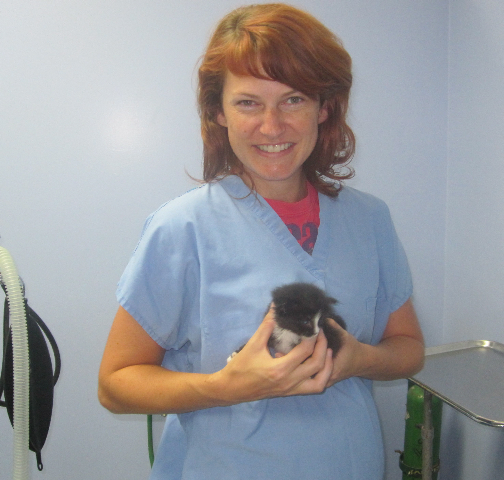Guest Post by Kellie Heckman, Executive Director, FiXiT Foundation
My partner and I founded FiXiT Foundation to end the companion animal overpopulation crisis in America. We knew that a new strategy was needed to reach a group of people that continues to allow unwanted kittens and puppies to be born. Currently, low-cost spay and neuter programs can easily be found across the country, offering to spay and neuter both cats and dogs for a fraction of the cost that private veterinarians charge. However, for the last ten years, the number of animals euthanized each year has remained at a plateau – nearly 4 million cats and dogs die every year in shelters across the U.S.!
We devised a plan that would focus on increasing demand for the existing spay/neuter programs. Instead of promoting messages that resonate in our animal-crazy brains, we would use extensive market research to determine what would motivate our target demographic, anyone with unfixed dogs and cats, into action.
To this end, we chose a closed system, both for pet and human populations, to test out our new strategy: St. Croix, U.S. Virgin Islands. This is an island in paradise that suffers from a huge problem – 4 out of 5 dogs and cats that enter the one shelter on island are euthanized due to a lack of adoptable homes. However, because there is only one shelter, we will be able to easily track the levels of intake and euthanasia while simultaneously tracking the success of different marketing messages and promotions.
We began our “Island Project” in the summer of 2010. Of course, there have been challenges along the way, but little did we know that something so basic as conveying what we were selling – spay and neuter – would be a challenge. We began our study by conducting a survey in which we would determine how many people on the island took care of dogs or cats, were the animals spayed or neutered, and if not, why.

The problem was that many people did not know what the terms “spay” or “neuter” meant, to such a large degree that we quit using the terms altogether. St. Croix’s residents are primarily of West Indian descent and many people speak Crucian, an English-based creole (see Cruciandictionary.com for examples), creating a bit of a language barrier. So we began using the word “fixed,” but many still did not relate. We learned the local term “cut,” which typically refers to just a neuter, but not always. When, in some desperate situations, that still didn’t work, we had to ask “Can your dog breed or have puppies?”
The next step in our plan was to generate advertisements with a variety of spay/neuter promoting messages and conduct a market research survey to determine which advertisements were the most convincing to our demographic. To accommodate our language barrier, we often used more than one term for spay/neuter on the same advertisement and used graphic images to give a clear context. During this survey, we also asked, without any graphics, what would be the most convincing message.

Surprisingly, and overwhelmingly, the message people thought would convince the most people was “end overpopulation”. “Overpopulation” is certainly a word that I would not have expected to enter the common vernacular when “spay and neuter” had not! We responded by creating a new advertisement that spread the word of St. Croix’s overpopulation problem.
In our research, we also asked people about their media habits. Are you on Facebook? Twitter? Where do you get most of your information: internet, television, newspaper, radio? Another big surprise in a place where 38% of the population lives below the poverty line is that 60% of St. Croix residents are on Facebook and said that internet was their media of choice, followed by television.
 With this insight, we have pursued a wide mixture of media types to place our advertisements for the spay/neuter clinic we launched in February: Facebook, Google, newspaper, radio, posters, etc. Each media’s advertisements include a unique phone number that we are tracking to determine what strategies will actually produce results. See the five posters here.
With this insight, we have pursued a wide mixture of media types to place our advertisements for the spay/neuter clinic we launched in February: Facebook, Google, newspaper, radio, posters, etc. Each media’s advertisements include a unique phone number that we are tracking to determine what strategies will actually produce results. See the five posters here.
We are currently in full swing, gathering more data about the behaviors of people on St Croix and fixing dogs and cats at a low cost. We will continue this process over the next several years. Over this time we will continue to make changes to the messages, incentives, and cost of the procedure to the public to determine the “tipping point” for the majority to spay and neuter their pets. Ultimately, we will pass along our refined strategy, and help take spay and neuter to the next level. Stay tuned!
FiXiT Foundation is a 501(c)(3) tax exempt nonprofit based in Norfolk, VA. See our five advertisements and visit us at FiXiT-Foundation.org or Facebook.com/FiXiTFoundation.







